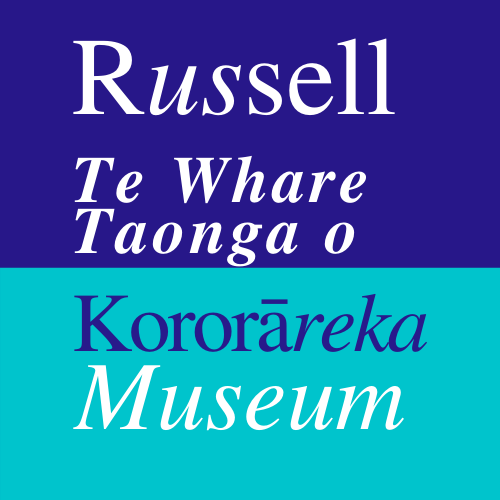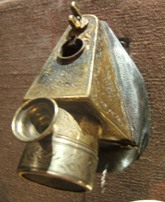This Ether mask is made of brass with decorative engraving and a nose covering of soft padded leather. Inside the round mesh covered part is a piece of sponge that held the ether when it was dropped through the funnel above. The round hole by the butterfly nut was covered and uncovered by thumb or finger to regulate the inhaling of air.
Chloroform was discovered in 1831 and first used in 1847. Queen Victoria was given it for the births of her younger children in the 1850s.
This mask belonged to Samuel Hayward Ford, New Zealand ‘s first resident surgeon who lived in Paihia, Te Wahapu and later Russell from 1837 until his death in 1876. He was highly thought of and obviously kept up to date with medical advances. However despite his skill only one of his large family survived childhood illnesses. Samuel, Martha, his wife, and some of their children are buried in Christ Church graveyard.
Russell Museum also holds Samuel’s brass plate used to advertise his surgery.






























